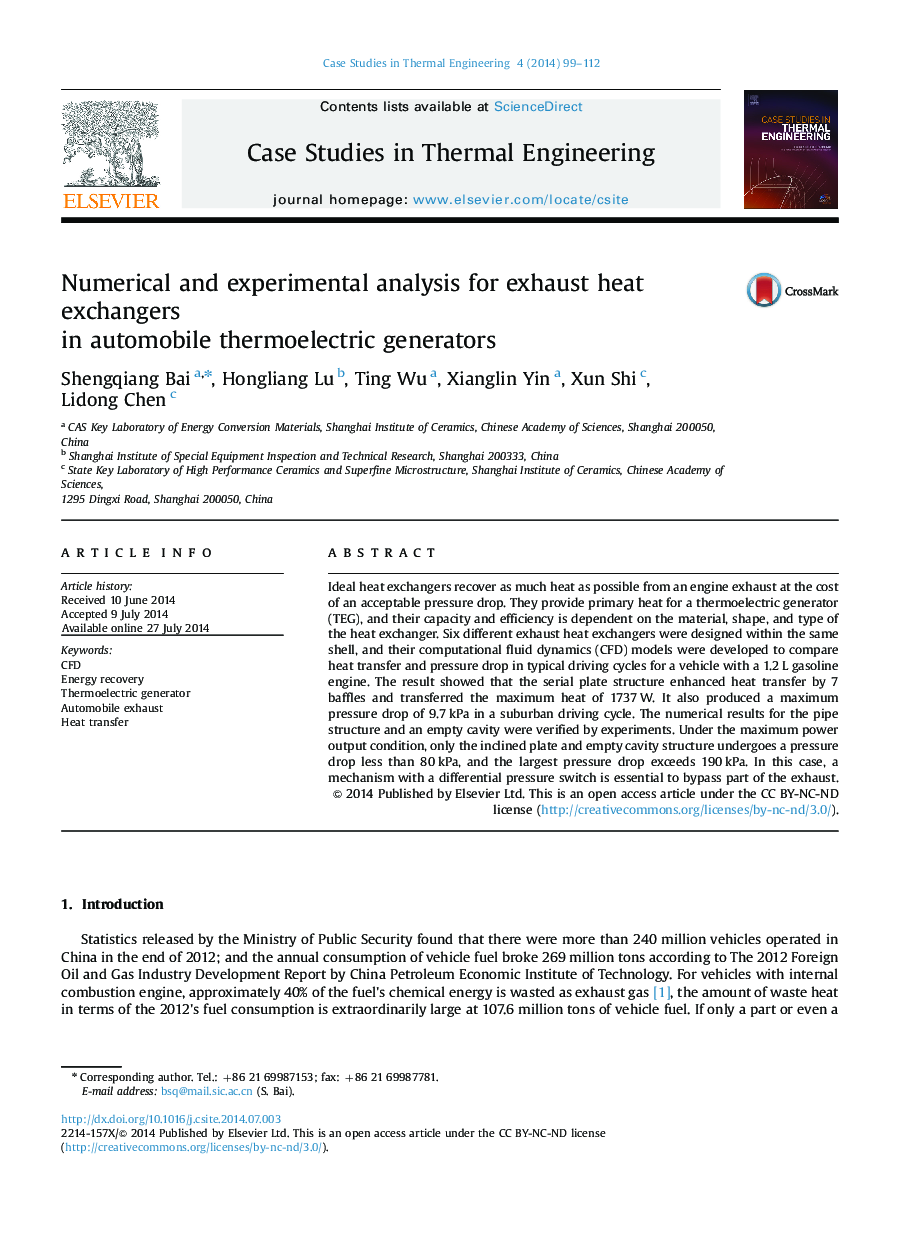| Article ID | Journal | Published Year | Pages | File Type |
|---|---|---|---|---|
| 765504 | Case Studies in Thermal Engineering | 2014 | 14 Pages |
Ideal heat exchangers recover as much heat as possible from an engine exhaust at the cost of an acceptable pressure drop. They provide primary heat for a thermoelectric generator (TEG), and their capacity and efficiency is dependent on the material, shape, and type of the heat exchanger. Six different exhaust heat exchangers were designed within the same shell, and their computational fluid dynamics (CFD) models were developed to compare heat transfer and pressure drop in typical driving cycles for a vehicle with a 1.2 L gasoline engine. The result showed that the serial plate structure enhanced heat transfer by 7 baffles and transferred the maximum heat of 1737 W. It also produced a maximum pressure drop of 9.7 kPa in a suburban driving cycle. The numerical results for the pipe structure and an empty cavity were verified by experiments. Under the maximum power output condition, only the inclined plate and empty cavity structure undergoes a pressure drop less than 80 kPa, and the largest pressure drop exceeds 190 kPa. In this case, a mechanism with a differential pressure switch is essential to bypass part of the exhaust.
